Sigma 105mm f1.4 DG HSM Art Lens Review L mount:
When the L Mount Alliance was announced, the first lens I thought of was the Sigma 105mm f1.4 HSM Art. I always wanted to use the 105mm but as some of you know, I was shooting with Leica cameras at the time, and using the lens wasn’t possible. After hearing Sigma and Panasonic were joining forces with Leica, I was quite excited for what would come from this alliance, and knew it was only a matter of time that I would soon be able to use the 105mm with my SL. It took a little time for the 105mm f1.4 to get released for L mount, and believe me, I was very impatient :). But it was finally released, and I can tell you right now that it is as good as I ever hoped it would be.
Thanks for taking the time to read my review! If it helped, please consider purchasing from any of the links mentioned in this post, which in turn, helps support this site. I get a small commission but it will not cost you anything extra. Thank you!
Sigma 105mm f1.4 DG HSM Art Lens Build Quality:
Let’s start by talking about the build quality. The 105mm f1.4 is very solid lens designed to handle professional use. It’s constructed using a combination of metal, and a Thermally Stable Composite material with the TSC allowing for use in wider temperature ranges. Theres is a focus ring for when you want to manually focus the lens. It is smooth in operation, and there’s a rubberize texture making grip easy even when you’re wearing gloves. The 105mm f1.4 also has a brass bayonet mount for high precision and durability. Speaking of, the 105mm f1.4 comes in L mount like you see here. It also comes in Sony E mount, Nikon F mount, Canon EF mount, and Sigma SA mount as well.
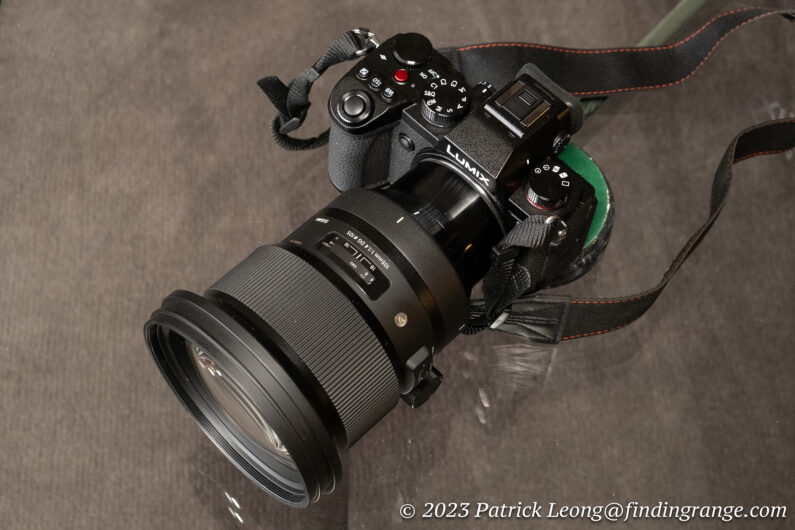
↑ Here’s a photo of the Sigma 105mm f1.4 HSM Art with the Panasonic Lumix S5.
It’s worth noting that in addition to the great build, the 105mm f1.4 is designed to work in all types of weather conditions. It is designed to be used as a professional lens after all. First off, a water and oil-repellent coating has been applied to the front element, which helps with preventing oil, and fat from sticking to the surface. Another benefit of this coating is it also helps make maintenance of the lens easier. Dirt is more easily wiped away. To top that off, the 105mm f1.4 has a dust and splash resistant structure. Being that this is an Art series lens, special sealing goes beyond just the mount; there is also sealing used in the manual focus ring area, and cover connection as well.
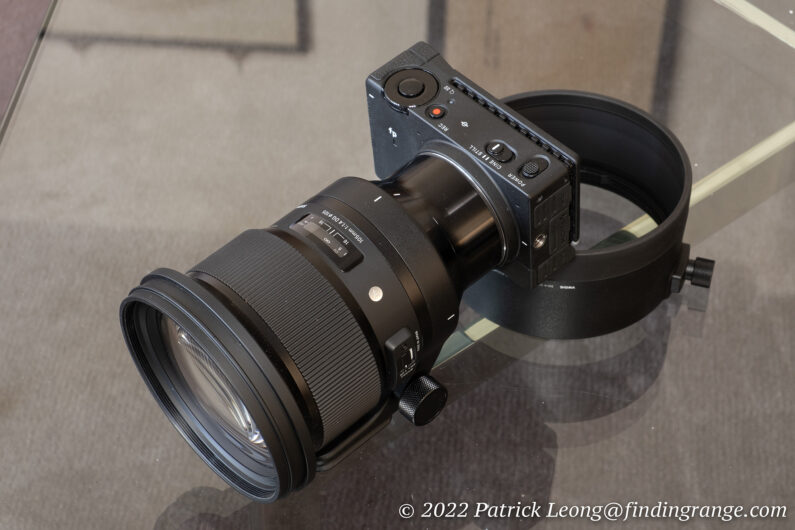
↑ Here’s the 105mm f1.4 attached to the Sigma fp-L.
Now, being that this is an autofocus 105mm lens with an f1.4 maximum aperture all while being built to pro standards, we’re not dealing with a light and compact lens here. It even comes with its own removable Arca-Swiss tripod socket or tripod collar as some call it. The size and weight shouldn’t be a surprise to anyone though. Other manufacturers with lenses of the same focal length and max aperture are also similar in size and weight. It’s just physics. I think what would help a bit is some sort of image stabilization built into the lens. Luckily, many cameras have image stabilization built in these days.
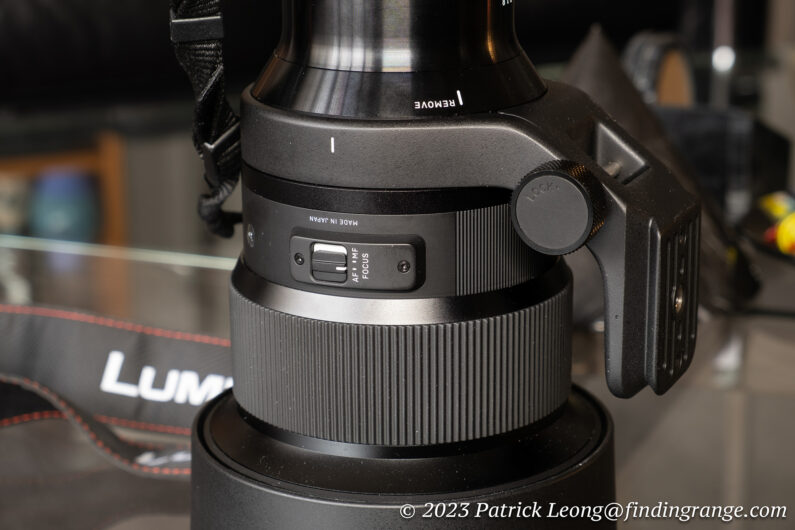
↑ AF/MF switch on the side.
Specs wise, this lens isn’t for the faint of heart. The L mount version measures 115.9mm × 155.5mm/4.5in. × 6.1in. It weighs 1,745g/61.6oz. That is 3.85 pounds. Furthermore, the 105mm f1.4 has a massive front element, and uses 105mm filters.
With all that said, the 105mm f1.4 HSM Art is not a general purpose lens but one that is a specialty optic designed with the sole purpose of producing the best portraits possible. If you are a photographer that needs a lens with these distinct features, and something you know will also deliver jaw-dropping images, then there is really no alternative. In other words, you basically get what is going to get the job done, and for many that are portrait, wedding, and boudoir photographers, for example, the 105mm f1.4 will create images that are truly unique, and plain out incredible. Designing something of this caliber is not something easy to do, and I imagine designers, and engineers need to disregard certain things like size limitations in order to achieve this kind of excellence.
In terms of accessories, a zippered case, and a lens hood are included. Instead of the typical ABS plastic, the lens hood features CFRP (carbon fiber reinforced plastic). It is reversible on the lens for easier storage.
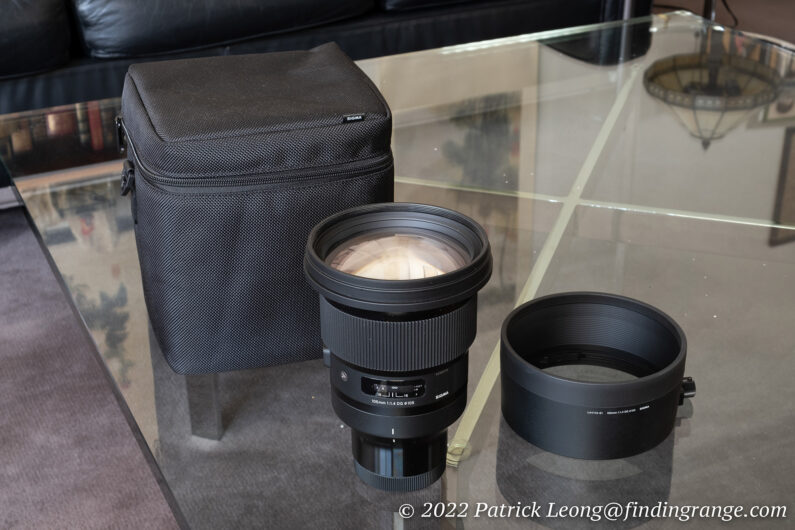
↑ Case and lens hood are included.
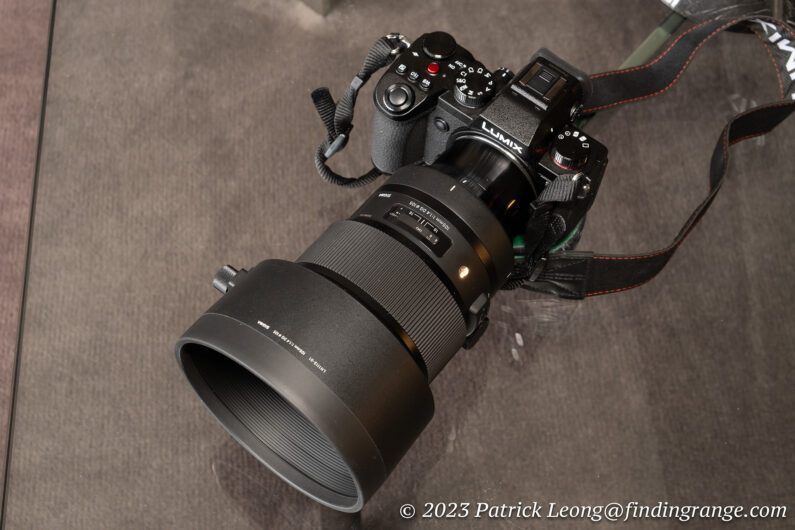
↑ This is how the lens hood looks like when mounted on the lens.
Sigma 105mm f1.4 DG HSM Art Lens Autofocus:
In terms of autofocus, the 105mm f1.4 has an integrated HSM (Hyper Sonic Motor) that delivers quick results. It is also essentially silent in operation. What’s really important I think with a lens like this is the accuracy. For those who might be worried, don’t be; this lens nails the shots at f1.4 with ease. I took a series of portraits, and the focus is excellent. Each time, the eyes were tack sharp to the point where you can see dust on the eyelashes. I used several different cameras when reviewing this lens, such as, the Leica SL2, Panasonic S5, and the Sigma fp-L with its 61 MP sensor (most were taken with the fp-L). Overall, I was very happy with the results.
Sigma 105mm f1.4 DG HSM Art Lens Image Quality:
In terms of optics, the 105mm f1.4 HSM Art is simply mind-blowing. To me, it’s not just purely the technical aspects that make me love this lens so much. I feel it is special because like all truly great lenses, the 105mm f1.4 has a distinct character. This isn’t just one of my favorite lenses produced by Sigma, it is one of my favorite lenses made by any manufacturer. The results from this lens are always seriously stunning, and I can see why this is considered the flagship of the f1.4 Art series.
↑ This was taken with the Sigma fp-L. I used f1.4 and 100 ISO here.
↑ This was taken with the fp-L using 800 ISO and f11.
↑ Here’s another taken with the fp-L. Settings were 100 ISO and f1.4.
In terms of sharpness, the 105mm f1.4 delivers images with excellent sharpness in the center even at wide open aperture with edges not too far behind, which is what you want, since I imagine many will be exploiting the heck out of that f1.4 aperture. Stopping down only further increases the sharpness performance of this lens. I found f5.6 to f8 to deliver the best that you can get in terms of sharpness but this is if we’re really nitpicking here. This is an Art series professional lens. The 105mm f1.4 is definitely something special, and you can expect the overall performance to be nothing short of incredible no matter what aperture your using. In other words, it is always going to be sharp regardless of aperture setting.
↑ This was taken with the the fp-L using f1.4 and 100 ISO.
↑ 100% crop of the photo above.
↑ Here’s a photo taken with the Sigma fp-L using f8 and 100 ISO.
↑ 100% crop of the photo above.
↑ Here’s another photo taken with the fp-L. It was taken on a tripod. The settings were 100 ISO and f8.
Other features include great color and contrast. I also found the 105mm f1.4 HSM Art to be highly flare resistant. Distortion isn’t really an issue. There is some noticeable vignetting, especially at f1.4 though. This is also why the 105mm f1.4 has a 105mm diameter front element to help improved peripheral illumination, and to reduce vignetting. For some, this might be a desired effect for portraits, and the vignetting isn’t out of the ordinary. Stopping down to f2 significantly reduces vignetting with smaller aperture making it essentially gone.
↑ This was taken with the Panasonic Lumix S5. The settings were f1.4 and 100 ISO.
↑ This was taken with the Leica SL2. I used 2500 ISO and f11.
↑ Here’s one taken with the Sigma fp-L with the settings being 100 ISO and f1.4.
Sigma 105mm f1.4 DG HSM Art Lens Bokeh:
Sigma has given the 105mm f1.4 HSM Art the nickname “bokeh master”, and it is truly fitting, since what this lens produces in terms bokeh is breathtaking to say the least. First off, the depth of field can get extremely shallow at f1.4, so even if you stop down a bit, you can still get that nice separation. Its nine-blade rounded diaphragm contributes to a beautifully silky smooth, and pleasing bokeh. Images have incredible depth, and an almost dream-like presence to them when photographed at f1.4.
↑ Sigma fp-L with the settings being 100 ISO and wide open.
↑ The settings are the same as above.
↑ The settings are the same as above.
In my opinion, this is bokeh at its very finest, simple as that, and having a 105mm focal length combined with an f1.4 just gives you a look that is out of this world good. It’s going to produce a certain style that, in my opinion, is unique enough that you wont see often, which might be a plus for you, if you’re trying to win over some clients.
↑ Here’s a close up example. The settings are the same as above.
↑ In this photo, I shot a little farther, so can see the bokeh effects. The settings are the same as above.
↑ The settings are the same as above.
I will admit that the 105mm f1.4 HSM Art isn’t easy to carry around. All that weight, and having to lug around a lens that is big enough where a tripod collar is included is a lot just for portraits. However, what the 105mm f1.4 delivers, especially when shot wide open is astonishing, and it completely justifies lugging something that has a 105mm filter thread. To me, the 105mm f`1.4 is just such an incredible lens.
Sigma 105mm f1.4 DG HSM Art Pros And Cons:
Pros:
- Built solidly and meant for professional use.
- Comes in several different mounts.
- Removable tripod collar.
- Weather and dust resistant.
- Fast autofocus that is also accurate.
- Incredible image quality; reference level.
- OUT OF THIS WORLD amazing bokeh.
- Ultra shallow depth of field; produces a truly unique look.
- worth EVERY penny; one of my all time favorite lenses.
Cons:
- Large and heavy.
- Image stabilization would help a bit.
Verdict:
If you’re looking for a portrait lens for your L mount system that produces incredible images, the 105mm f1.4 HSM Art might just be perfect for you. It has so much going for it. The build is excellent, the autofocus is quick, and the image quality is spectacular. As I said numerous times in this review, the 105mm f1.4 is one of my all time favorite lenses currently out.
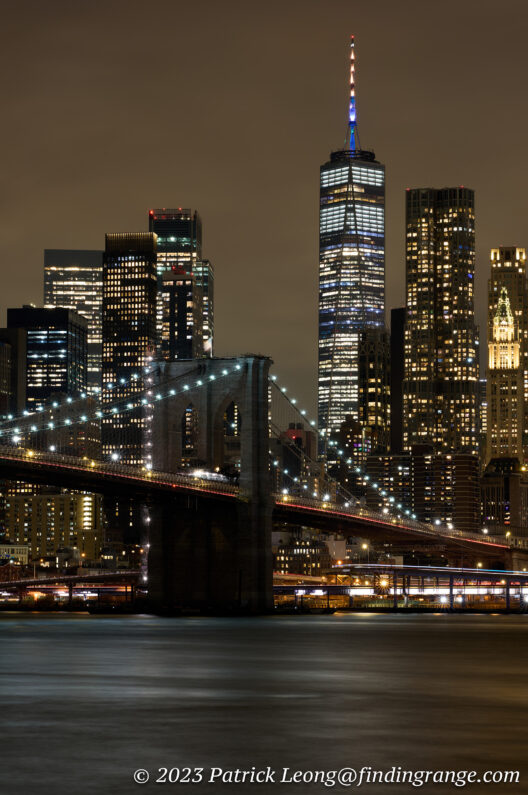
↑ This was also taken with the fp L. I used 100 ISO and f11.
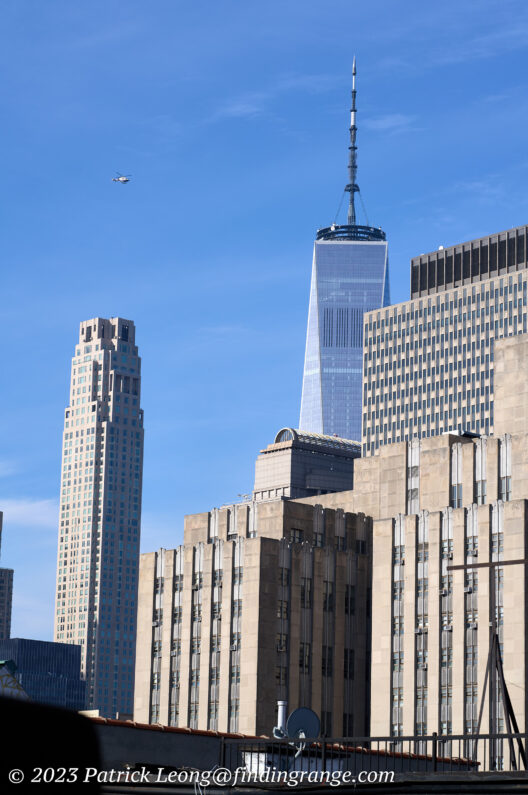
↑ This was taken with the fp L using 100 ISO and f8.
There’s no doubt that the 105mm f1.4 is epic but like everything out there, nothing is perfect. I think for some, the biggest issues are going to be the size and weight. Truthfully, I am still surprised that this lens comes with a whopping 105mm diameter front element. Plus, the 105mm f1.4 weighs over 3 pounds.

↑ Here’s another from the fp L. I used 100 ISO and f8.
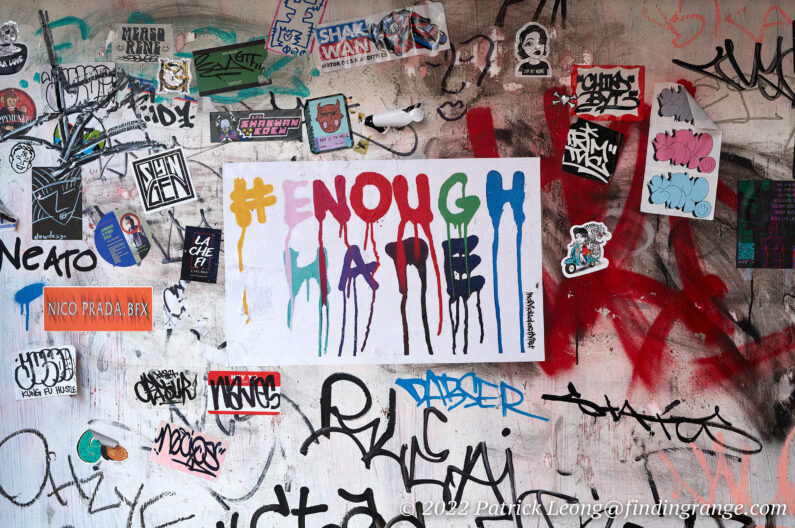
↑ This was taken with the fp L. The settings were 1000 ISO and f4.
With all that said, we have to remember that the 105mm f1.4 is not a general purpose lens but a highly specialized one designed for professional use. It has certain characteristics that will produce truly unique images. Like any other reference level lens with incredible optics, the designers clearly prioritize image quality above all else. In my humble opinion, the kinds of qualities that this lens has makes it completely worth having to lug something of this size and weight. Professionally speaking, you’re going to get the gear that does the job, and the 105mm f1.4 is certainly one of these pieces of gear. I seriously can not praise the 105mm f1.4 enough.
It is mind blowing how good it is, and even though it really does come down to the photographer, it’s certainly a piece of gear that will significantly help up your game and portfolio. If you’re sole purpose is to find a lens for portrait and event photography, and you want something that has essentially a no-compromise approach to image quality, this is THE lens for you.
Thanks for taking the time to read my review! If it helped, please consider purchasing from any of the links mentioned in this post, which in turn, helps support this site. I get a small commission but it will not cost you anything extra. Thank you!

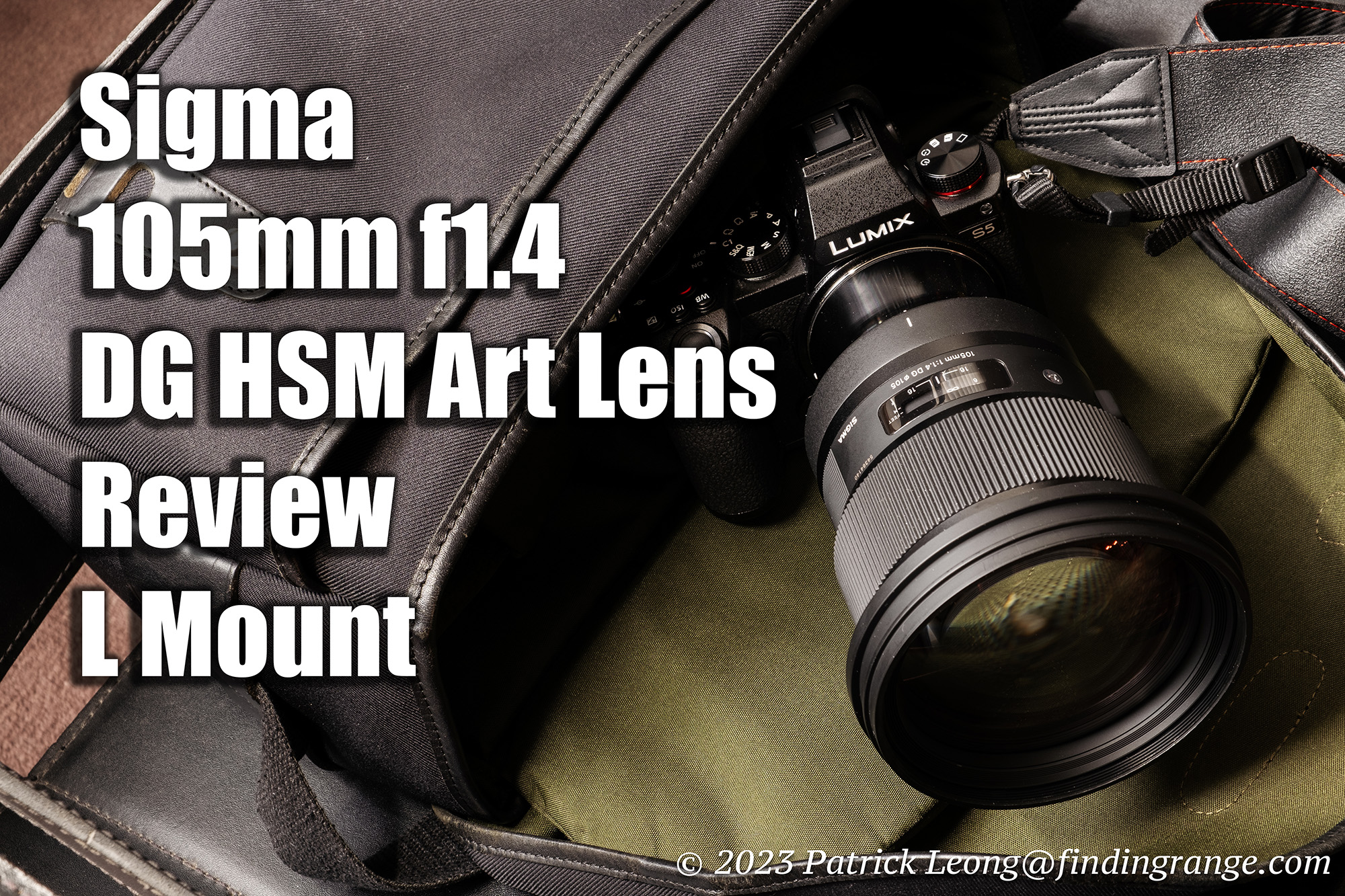
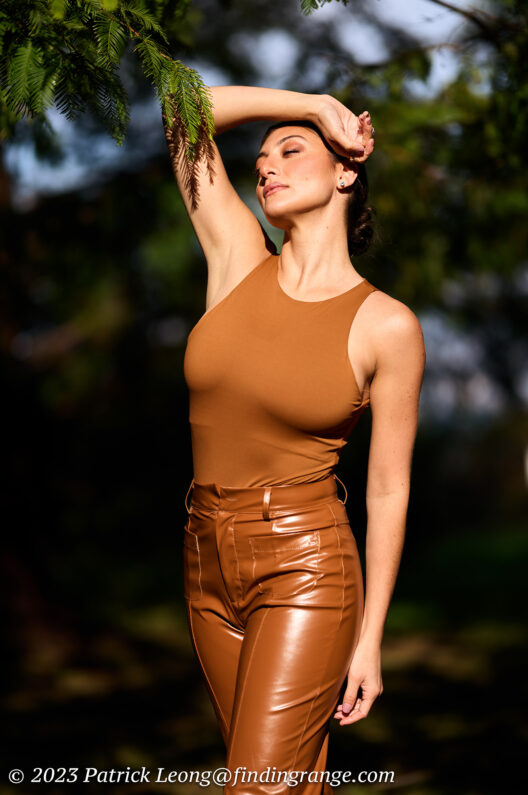
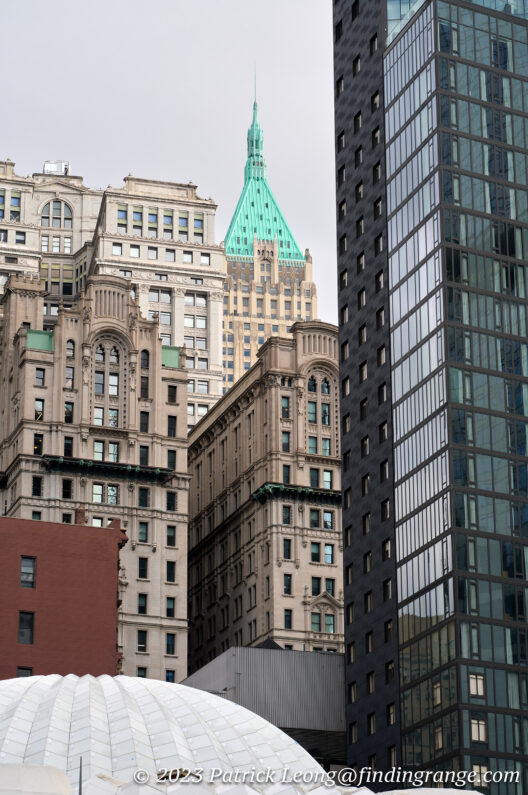
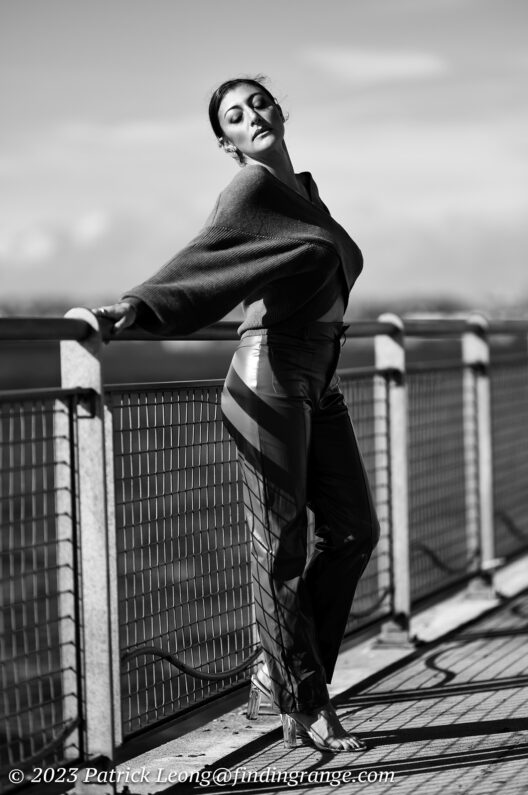
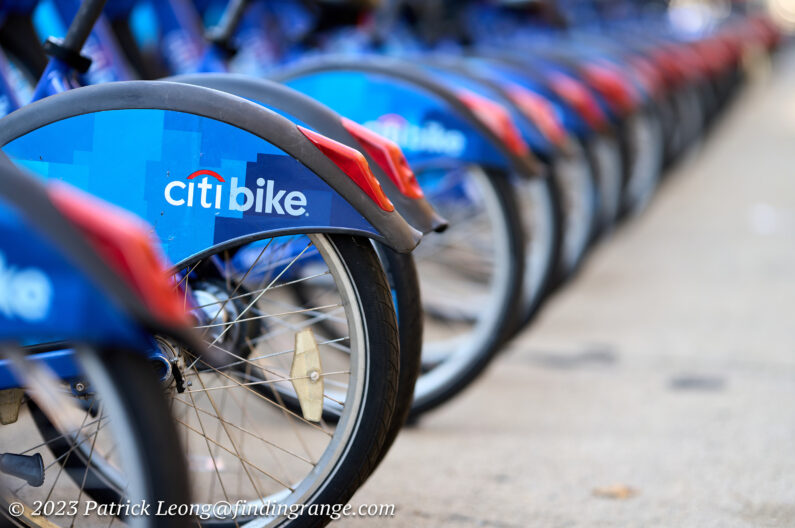
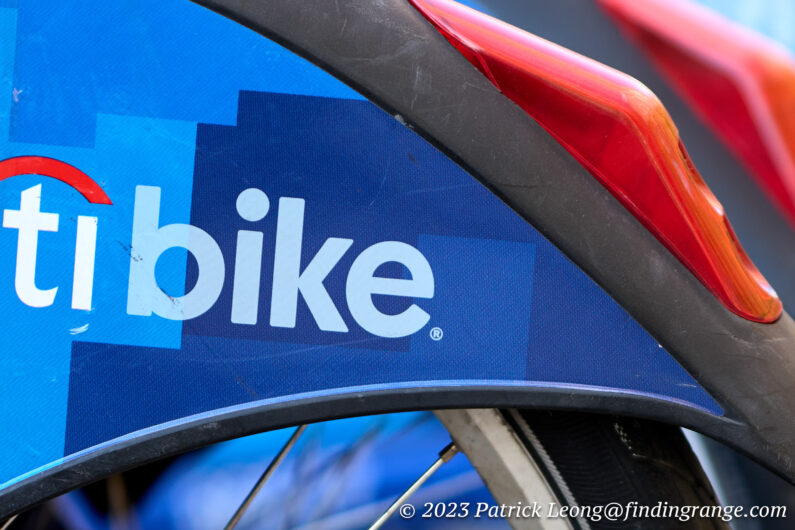
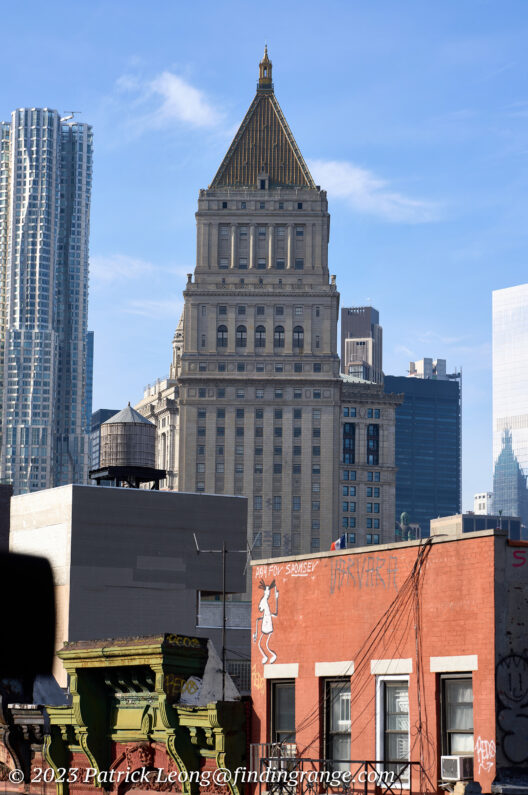
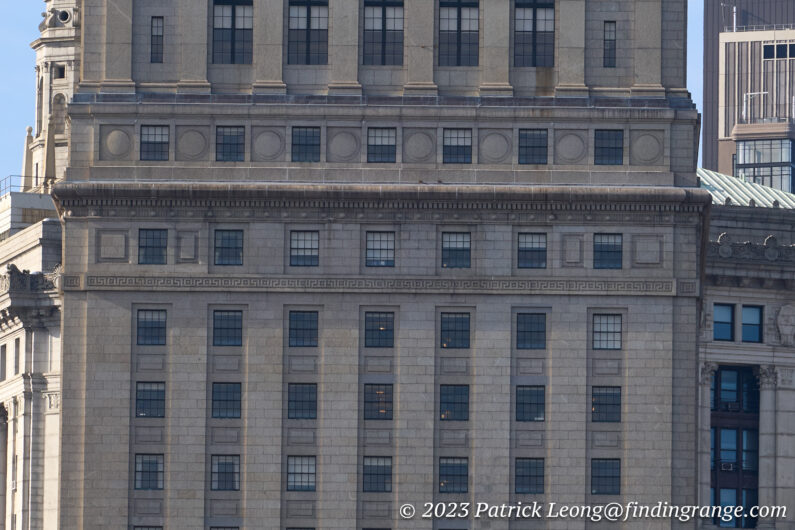
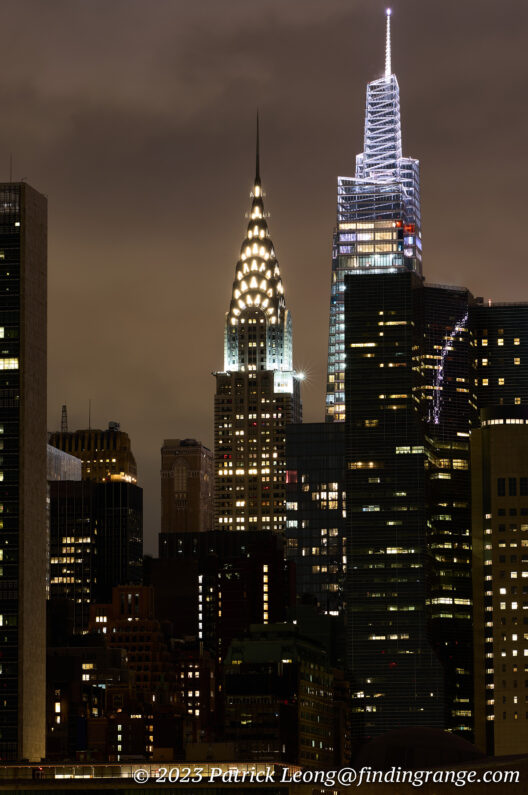
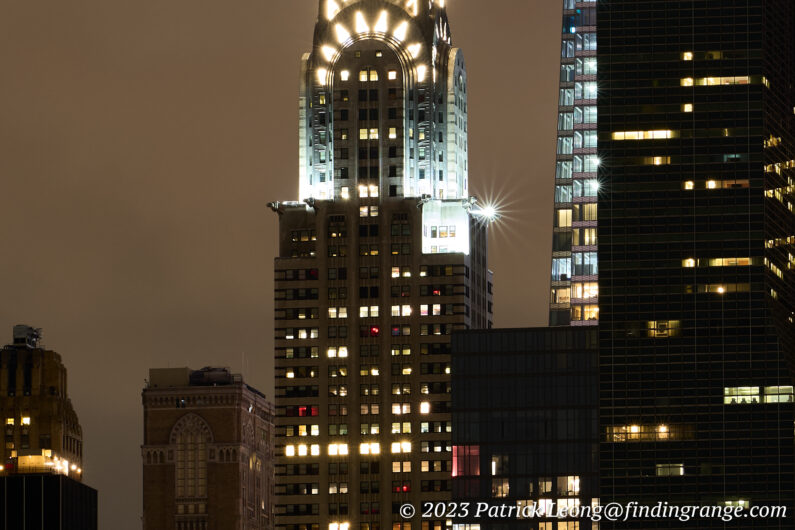
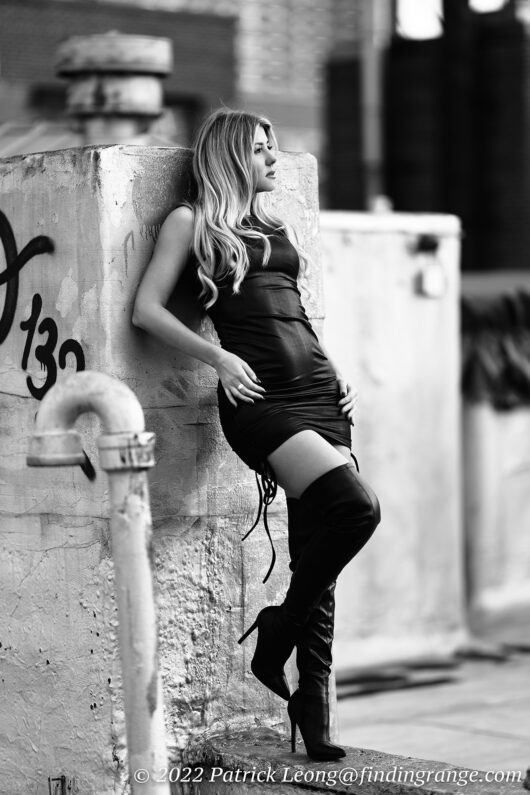
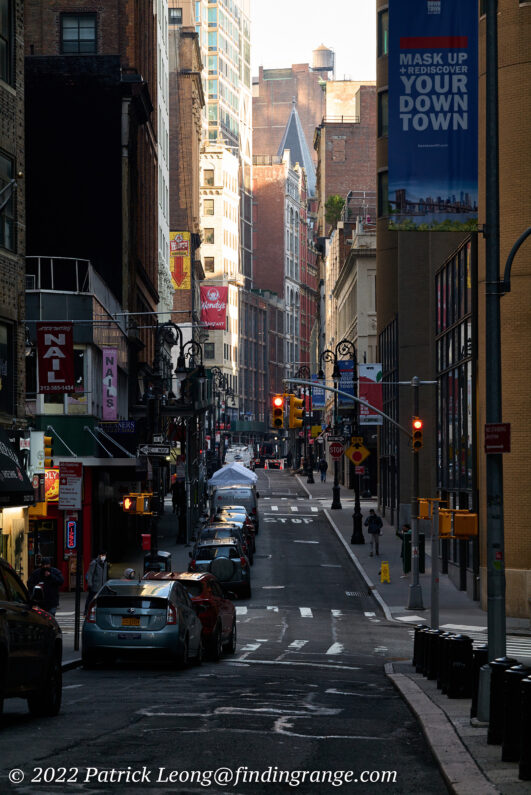

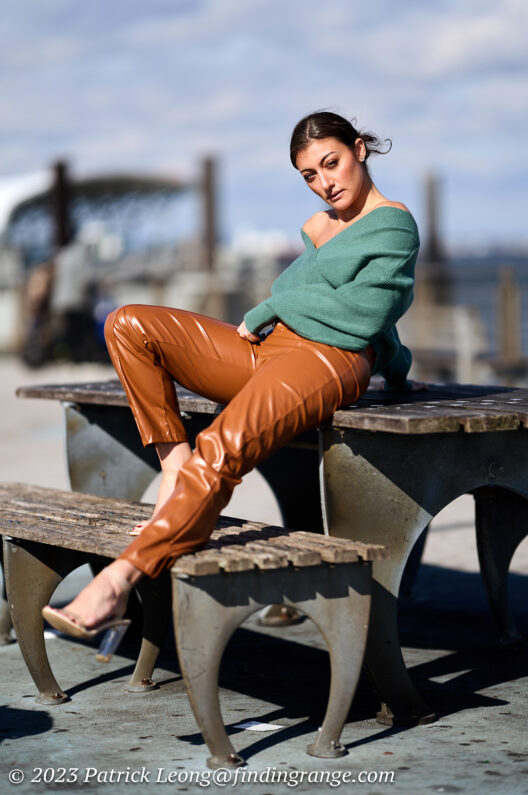

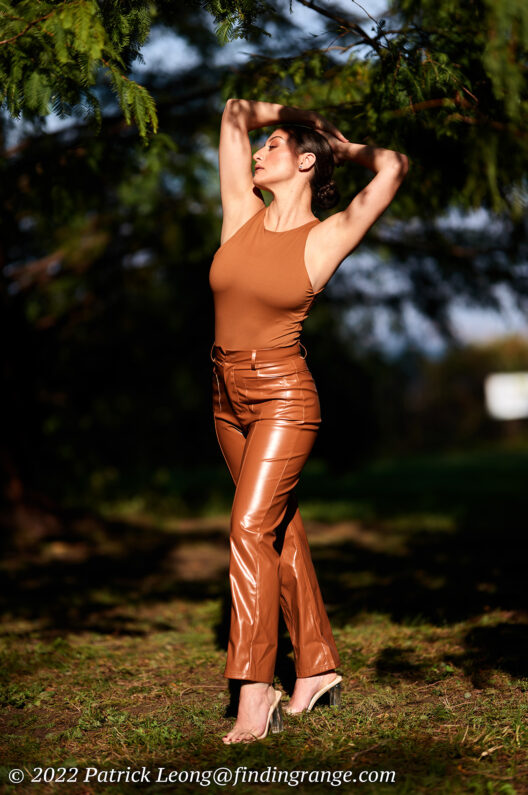
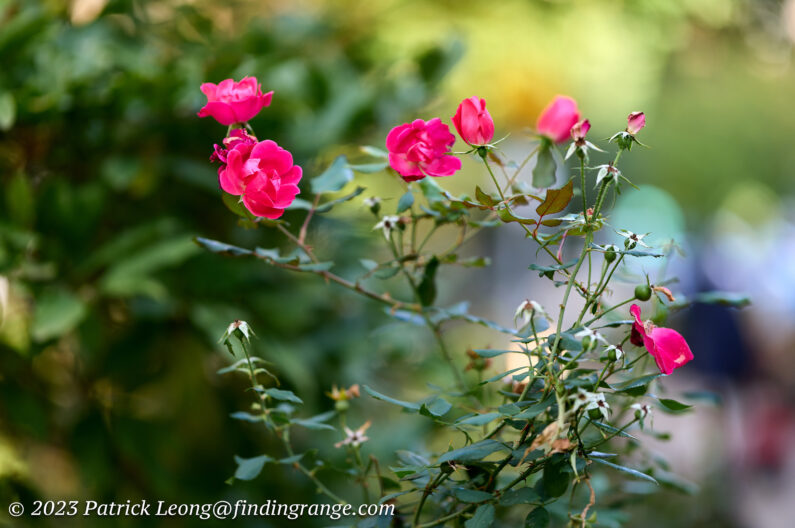
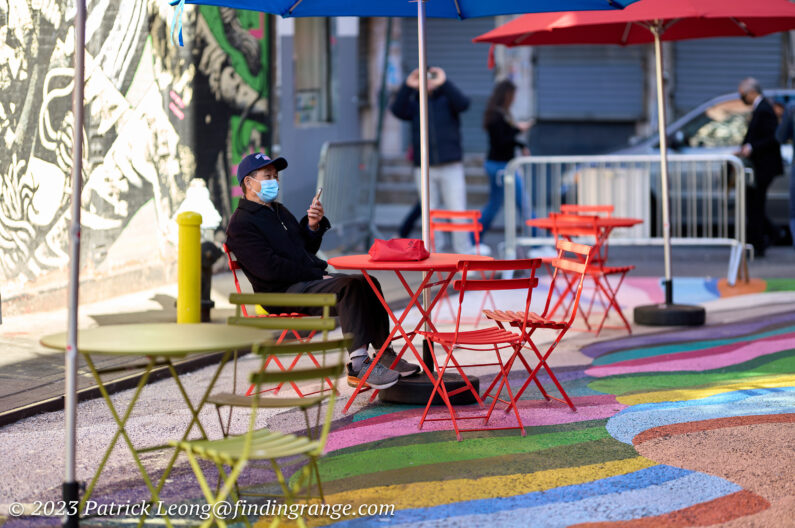
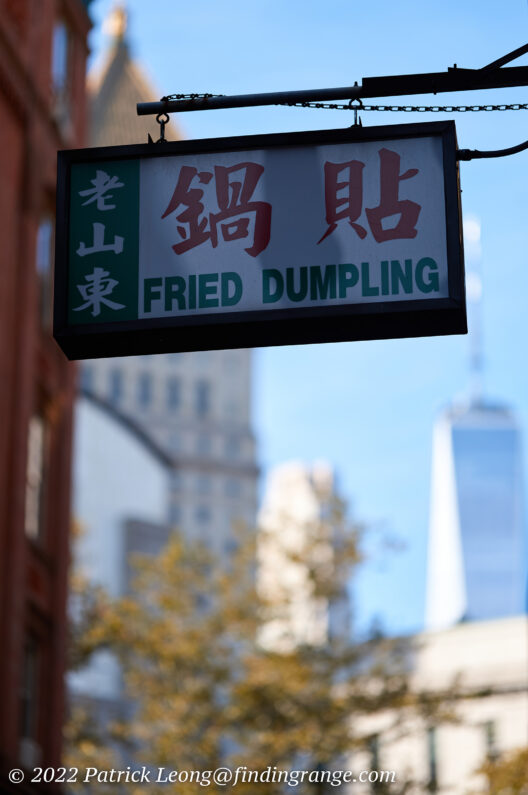
Great pages! I’m sure it’s influenced me to get more into Leica (SL, CL, M10, M4,M3, CLE). I recently did a shoot with my 7R4 with the 24-70 GM and my SL and 35 Summicron SL. I have little ps and lr experience, but just looking at the raws, the Sony images seemed flat compared to the SL at low iso. I found higher at over 1k to 2500 started to get grainy. Best was at 50 wide open and I was like wow. Should I be looking at a newer body for the low light? Have another shoot in nyc being planned so trying to make the most of it. I couldn’t pull the trigger on the 50 summilux, slow and a beast, yet I recently got a 24-90 and 90-280. Thanks